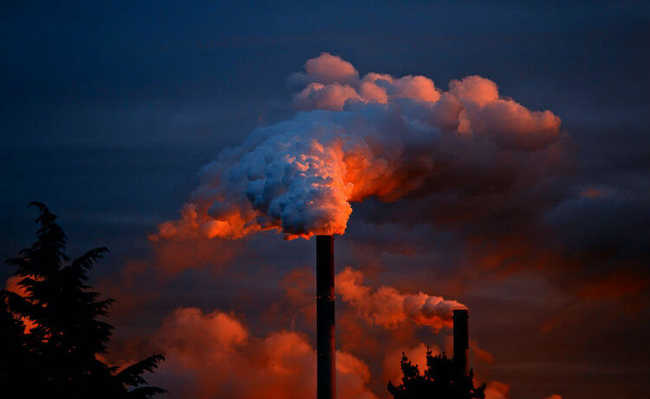What is green energy?
The term “ecological energy” can be used to refer to renewable and clean energy

American Public Power Association image in Unsplash
The search for the reduction of social and environmental impacts caused by traditional energy sources and for the preservation of natural resources started the use of alternative energy sources with low environmental cost, called ecological energies. In addition to being practically inexhaustible, ecological energies can have a very low environmental impact, without affecting the planet's thermal balance or atmospheric composition. Hydroelectric, tidal, geothermal, solar and wind power sources stand out as alternative and renewable sources.
Emergence of ecological energies
The First Industrial Revolution, in addition to generating transformations related to the work and production process, increased consumption and dependence on different energy sources for the most varied anthropic activities. Initially, charcoal – both vegetable and mineral – was the main energy source used in the world. Later, other sources started to make up the planet's energy matrix, such as oil, electricity and biomass.
Oil, coal and natural gas, also called fossil fuels due to their formation resulting from sedimentation and decomposition of organic matter, correspond to the main energy sources used in the world, representing 80% of the global energy matrix.
The world's high dependence on fossil fuels poses several challenges for the future. First, they are finite energy sources, as their production cycle involves long geological ages. Furthermore, they are sources that produce greenhouse gases, such as CO2, which aggravate climate change and its future consequences.
These challenges have resulted in an increased demand for cleaner energy sources. Several countries, such as Germany, Sweden, the United Kingdom and even nations recognized for their high levels of pollutant emissions, such as China and the United States, have increased their investments in search of alternative energy sources.
Hydroelectric, tidal, geothermal, solar and wind power sources stand out as alternative and renewable sources, the latter two of which have the greatest growth potential, according to current forecasts.
Main types of ecological energy
hydroelectric
Hydroelectric energy is the use of kinetic energy contained in the flow of water bodies. Kinetic energy promotes the rotation of the turbine blades that make up the hydroelectric power plant system, to be later transformed into electrical energy by the system's generator. Brazil is the second country in the world with the greatest capacity and generation of hydraulic energy, only behind China. Despite being considered a clean energy source due to its low emission of greenhouse gases, large hydroelectric plants cause significant impacts on the environment; the solution would be to invest in small hydroelectric plants (PCHs) that have less impact.
- Learn more in the article: "What is hydroelectric energy?"
ocean energy
This type of ecological energy can come mainly from tides (tidal waves) or waves (ondomotives). This type of energy source is still little used, since to be efficient and economically viable, the coast needs to have specific characteristics, such as tides greater than three meters. The price of kW is high, making this type of energy unattractive compared to other sources.
Geothermal energy
Geothermal energy is the use of thermal energy from the Earth's interior. This ecological energy source can be used directly (without the production of energy in power plants, using only the heat generated by the ground) or indirectly (when the heat is sent to an industry that transforms it into electricity). However, geothermal energy is only viable in regions with geological potential for this, such as those close to volcanoes. Depending on the technique used, this type of energy can also directly emit hydrogen sulfide, carbon dioxide, ammonia, methane and boron, which are toxic substances.
Solar energy
Solar energy is electromagnetic energy whose source is the sun. It can be transformed into thermal or electrical energy and applied to various uses. The two main ways of using solar energy are electricity generation and solar water heating. For the production of electrical energy, two systems are used: the heliothermal, in which the irradiation is first converted into thermal energy and later into electrical energy; and photovoltaic, in which solar radiation is directly converted into electrical energy. Energy from the sun is the most promising ecological energy for the future and the one that receives the most investments. In addition, this type of energy is one of the easiest to be implemented in the establishments that want to reduce their CO2 emissions. Learn more about this green energy source in: "Solar energy: what it is, advantages and disadvantages".
wind energy
Wind energy is energy produced from the kinetic energy of the wind (moving air masses) and the electromagnetic heating of the sun (solar energy), which together move the pickup blades. Brazil has great wind potential, that's why we joined the ranking of the ten most attractive countries in the world for investments in the sector. The CO2 emission of this alternative energy source is lower than that of solar energy and it is an option for the country not to depend only on hydroelectric plants. Investments in wind farms are a great option for neutralizing carbon emitted by companies, activities, processes and events.
- Learn more about wind energy in the article: "What is wind energy?"
Brazil situation
In Brazil, investments in ecological energies are also expected to increase. The country is already one of the countries that most use renewable sources in its energy matrix, which is mainly due to the high participation of hydroelectric plants in electricity generation and in the consumption of ethanol in automobiles. In addition, wind energy has experienced strong growth in recent years, becoming one of the main electricity generators in the Northeast region.
According to forecasts by the British oil company British Petroleum, it is expected that 48% of the country's energy in 2040 will come from clean and renewable sources. There is also a need for Brazil to advance in terms of energy efficiency. This involves the development of new technologies that use a smaller amount of energy, such as in automobiles, electronic devices and production processes in industries and in the field. In any case, the expectation that Brazil will make its energy matrix less dependent on fossil fuels creates a positive scenario with regard to the future of world energy.










